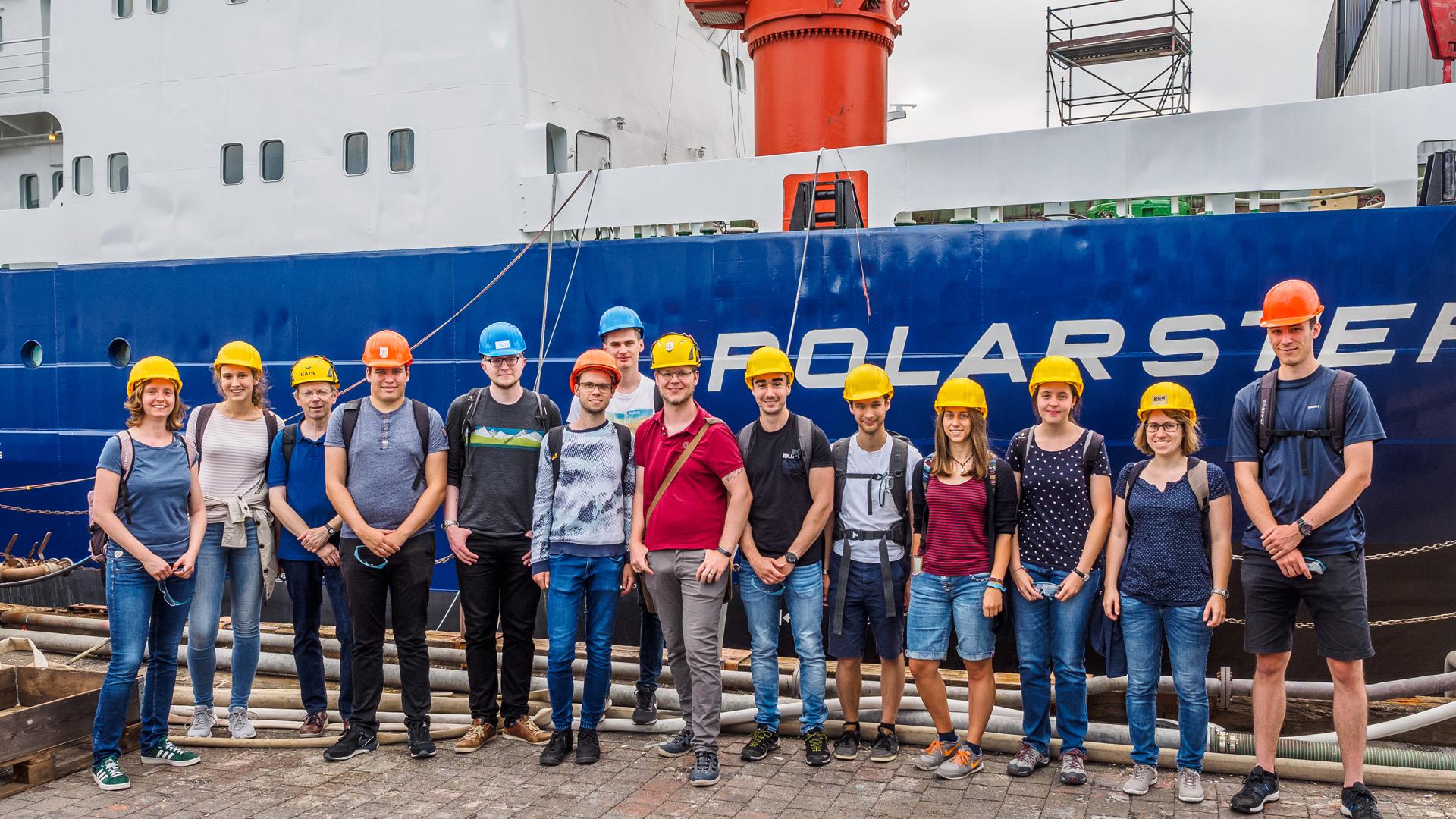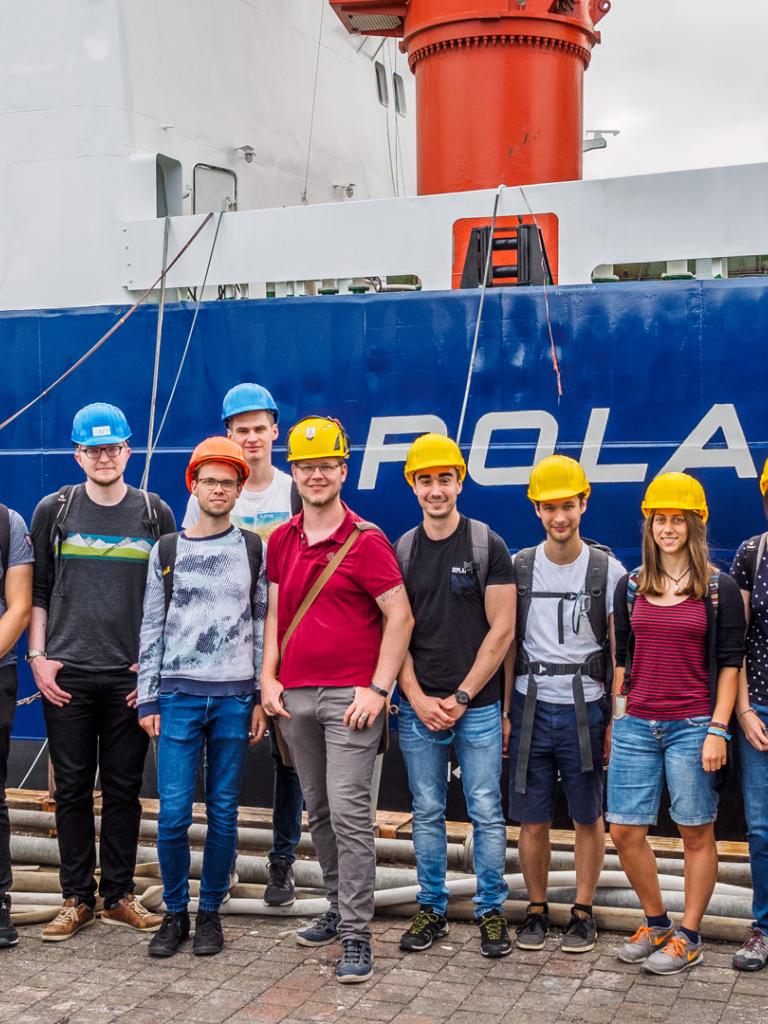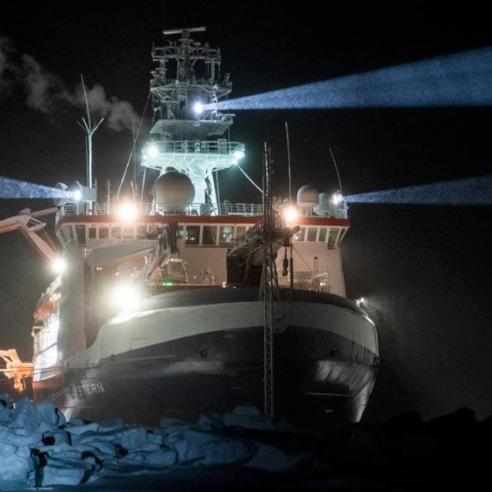
RV Polarstern, a truly unique ship
The second blog from the students tracking the MOSAiC expedition is here.


Take a look inside the RV Polarstern and get an idea of life on board for the crew members and scientists who will be calling it home for the next year.
11 March 2021
17 October 2019
Blog two
Inside the Polarstern
Authors: Fabian Baur, Tobias Kern, Bruno Kothe, Alexander Scholz, Antje Wagemann

For more than thirty years, the German research vessel RV Polarstern has been sailing for scientific purposes through the Earth’s polar regions.
The Polarstern, which is operated by the Alfred Wegener Institute, has proven itself as one of the most important tools in polar and ocean research. Even though it’s the oldest of the German research vessels, it’s still one of the most powerful ice-breaking research ships worldwide. The RV Polarstern has already visited Antarctica 35 times and the Arctic 32 times. The ship and its crew spend about 300 days at sea every year.
During the internship phase of our meteorology studies, we had the unique chance to visit the RV Polarstern in Bremerhaven, whilst some repair work was being done in preparation for the next expedition called “MOSAiC” (Multidisciplinary drifting Observatory for the Study of Arctic Climate). We saw a lot of interesting technology on board and couldn’t imagine how it must feel to be one of the 55 scientists or 43 crew members breaking through the ice.

When we arrived at the dock, we were impressed by the size of the ship. Due to the big double hull, which is built especially to withstand the challenges in those extreme regions, the RV Polarstern has a high draft of 11.21m. It also has a length of 117.91m and a width of 25m, so there’s a lot of space inside (which is necessary to store equipment).
One of the main assignments for the ship is to supply the “Neumayer III”, a research station in Antarctica with food or fuel, which is needed to survive during the winter. However, scientific equipment also takes up a lot of space. There are also different laboratories on board where meteorologists, geologists, biologists, glaciologists, chemists and other marine researchers can do their work. If laboratories with special requirements are needed, there is the possibility to store some laboratory containers on board. The RV Polarstern also has two helicopters, which can perform research-measurement flights and are also used for navigational support, ice exploration or for counting whales. Two dinghies for ashore missions complete the on-board equipment.

All collected data is captured by a powerful on-board computer system and can also be transmitted via satellite link, if required.
Another frequent user of the satellite communication suite is the on-board meteorological observatory. A meteorologist and a weather technician/observer from the German Weather Service (DWD) receive data and use it to predict sea weather and aviation weather for the helicopter pilots.

The weather forecast is delivered during the daily morning briefing in order to determine if the planned scientific investigations or flights are possible under the weather conditions expected during the next 24 hours.
For the weather forecasts, the ship is equipped with measuring devices that are comparable to those of a weather station on land.
Furthermore, it is possible to release weather balloons to observe the current conditions in the atmosphere above the ship to complete the information for their weather forecasts.

The data gained will also be sent to the German Weather Service via satellite in regular intervals.
In addition to research facilities, the RV Polarstern also has a variety of amenities that the crew can use outside of their working hours. This includes, for example, a swimming pool, a gym and a sauna.
On such a long journey, in addition to the food supply, medical care is very important. For this purpose, the ship’s doctor and nurse have a fully-equipped treatment room and an operating theatre in which even small surgeries can be performed. There is also telemedical support from the hospital in Bremerhaven.

During our visit, we clearly got the impression that the RV Polarstern is ready for its future tasks and, despite its age, appears modern and efficient. Thanks to a refurbishment between 1999-2001, visitors hardly notice the age of the ship. Planning for a new research vessel started in 2014; but until then the RV Polarstern will remain a truly unique ship and continue to perform her duties reliably.
We hope you enjoyed this second instalment from the meteorological students tracking the expedition. Stay tuned for the next blog coming soon!
For any questions, please use the comments section or write to: press@eumetsat.int


